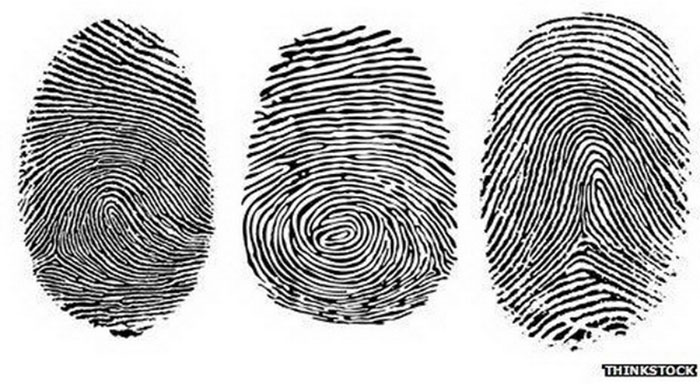New discovery on the mechanism of human fingerprint formation
An international team of scientists has discovered that the mechanism of human fingerprint formation does not lie deep in the skin but correlates with the development of limbs.

A variant near the EVI1 gene is significantly associated with fingerprints.
The findings, published this weekend in the journal Cell, provide genetic clues to how people acquire their unique fingerprints and could help detect genetic diseases in babies. .
Researchers at the Chinese Academy of Sciences (CAS), Fudan University, the University of Edinburgh (UK) and research institutes in the US, India and Australia scanned the genomes of more than 23,000 people.
Thereby, they found that 43 gene loci (gene positions on DNA molecules) are related to fingerprints or genes in human chromosomes and many of these have never been recorded before.
Researcher Wang Sijia at the Institute of Nutrition and Health at CAS, co-author of the study, said that these genes are involved in limb development in general, rather than development in the body. skin as previously speculated.
Other collaborators revealed a variant near the EVI1 gene, which is significantly associated with fingerprints on the three middle fingers of humans. Their research provides a biological explanation for the similar ridges of the index, middle and ring fingers.
Experiments in mice and human fetal tissue showed that the factors that facilitate the expression of the EVI1 gene are mesenchymal cells involved in the limbs rather than epithelial cells involved in the skin.
Researchers have also found that fingerprint patterns are genetically correlated with hand proportions.
Several congenital diseases have been found to be associated with specific fingerprint patterns. The researchers therefore hope that their new finding can be translated into clinical tools to help with early diagnosis of neonatal pathology.
- Develop 'universal' fingerprints, unlock all phones
- Discover the mechanism of cardiac formation in the embryo
- Technology of 2015: Fingerprint sensor
- What is fingerprint sensor? What effect does it have on iPhone 5S
- How are fingerprints formed?
- Fingerprint lock
- If you own a fingerprint of this type, you are born with a rare talent
- Video: Mechanism of scar formation in skin and viscera
- Detection of spider silk formation mechanism
- New discovery about drug addiction
- Will fingerprints change after we die? The answer surprised everyone!
- The first sketch image of the mechanism of memory formation
 'Fine laughs' - Scary and painful torture in ancient times
'Fine laughs' - Scary and painful torture in ancient times The sequence of numbers 142857 of the Egyptian pyramids is known as the strangest number in the world - Why?
The sequence of numbers 142857 of the Egyptian pyramids is known as the strangest number in the world - Why? History of the iron
History of the iron What is alum?
What is alum? Gene discovered that makes it easier to have a baby girl
Gene discovered that makes it easier to have a baby girl  Gene discovered that causes rare genetic eye disease
Gene discovered that causes rare genetic eye disease  China built a 'gene bank' of ancient ceramics
China built a 'gene bank' of ancient ceramics  Why can humans talk but apes can't?
Why can humans talk but apes can't?  Scientist is shocked when an experiment accidentally causes hamsters to 'change their behavior'
Scientist is shocked when an experiment accidentally causes hamsters to 'change their behavior'  For the first time successfully performed parthenogenesis in mice
For the first time successfully performed parthenogenesis in mice 